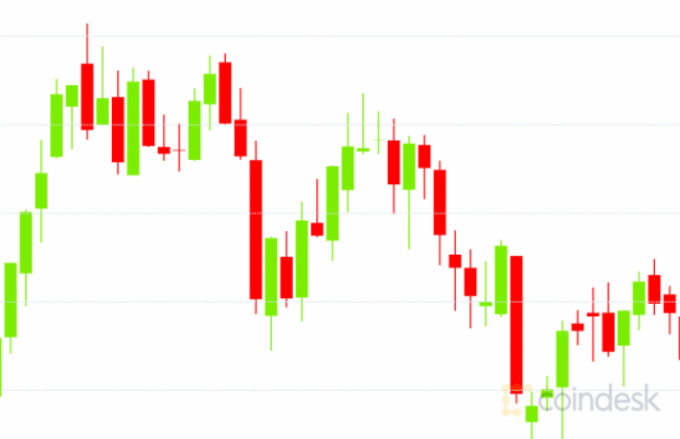First, a series of attacks were executed against the network on June 24 and July 1, 6 and 9. It is unclear whether any users lost money, but the fact that someone managed to double-spend coins rattled market participants.
A few days later, Gravity suspended trading of BSV, citing the disabling of deposits and withdrawals at “several large exchanges,” which the London-based brokerage said forced its liquidity providers to stop making markets in the asset. Since then, BSV trading has resumed on the platform.
On Tuesday, the Binance exchange announced that at the end of the month it will suspend its BSV mining pool, which contributes an estimated 0.044 exahashes per second (EH/s) of processing power to the network, 8.2% of the total. Binance’s withdrawal means the BSV network will have less overall computing power verifying transactions, making attacks even easier to perform.
The series of unfortunate events appears to be weighing heavily on the price of BSV, founded by Craig Wright, the controversial Australian businessman who has long claimed to be Bitcoin’s pseudonymous creator, Satoshi Nakamoto. BSV is off 73% from its high in May of $461. Over the last 24 hours the coin is up 2.59% at $124.67.
Long before the attacks, at least five other exchanges — Kraken, Okcoin, Coinbase, Binance, Independent Reserve and ShapeShift — had delisted BSV over the last two years, often in response to Wright’s behavior, particularly his lawsuits against his critics.
Undeterred, Wright, chief science officer of a company called nChain, kept the suits coming. In June of this year, he won a copyright case in London against the website Bitcoin.org for posting Nakamoto’s Bitcoin white paper, which Wright insisted was his work. Wright prevailed in part because the owner of the site, an anonymous user by the name of Cobra, refused to appear in court.
Some exchanges, however, remain supportive of BSV. Bittrex still allows users to swap BSV for fiat, while OKEx and Huobi support trading of BSV with stablecoins and other cryptocurrencies.
The Bitcoin Association, a Switzerland based non-profit company that supports the development of BSV and BSV-centric startups and enterprises, said it has been actively communicating with exchanges and trying to support “the reinstatement of BSV deposit, withdrawal and facilities as soon as possible.”
What Is BSV?
BSV is a fork, or splinter currency, of Bitcoin Cash (itself a fork of Bitcoin) whose block size is determined by market forces rather than being fixed. During the 2017 bull run, fees for sending transactions on the original Bitcoin network went through the roof and some transactions weren’t processed for days on end. This was due, in part, to Bitcoin’s fee structures which have transactions compete with each other for block space via bidding fees to the miners.
This is what is referred to as Bitcoin’s “scalability problem.” When use across the network is high, so are the fees. One camp in the Bitcoin community offered a solution. By increasing the block size, miners would be able to fit more transactions into each block, hence lowering fees as well as being able to process more transactions every 10 minutes.
But this solution was roundly resisted, and the debate over block size sparked a civil war in the Bitcoin community. Ultimately, those who wanted to keep the block size limit unchanged prevailed.
So, on Aug. 1st, 2017 Bitcoin Cash split as a hard fork of the Bitcoin network with 8 megabyte blocks rather than 1 megabyte blocks. But even among the group that seceded, not everyone agreed with the magnitude of change; a subgroup led by Wright believed BCH’s block size still wasn’t large enough. A new hard fork, this time splitting off from Bitcoin Cash, called BSV emerged which eventually introduced 2,000 megabyte blocks during the Quasar update.
Many free market-minded individuals within the newly seceded BSV community looked at the inherited feature of a block size limit and asked: if Bitcoin has so many free-market characteristics, then why shouldn’t the block size be determined by free-market forces as well? So, the block size limit was removed completely from BSV.
The Attacks
During the June and July attacks, a single mining pool, Taal, captured 78% of BSV’s hashrate, well over the 51% threshold needed to take control of a network. But be clear: Taal itself did not attack the network, nor was this the proverbial “51% attack.”
Rather, the block reorganization attack was carried out by an “unknown miner operating under the ‘Zulupool’ moniker,” according to an email from the Bitcoin Association to CoinDesk. Again, to be clear: this miner was an impostor.
Josh Petty, CEO and founder of Twetch.com, told CoinDesk he spoke with the real Zulupool Hathor mining pool and confirmed that the malicious actor was not related to them. “The attacker, who also called themselves ZULUPool, did not put the Hath string or the state of the Hathor chain in the coinbase message, suggesting they are not actually the real ZULUPool, as all of ZULUPool’s hashrate comes from Hathor mining across the various Bitcoin-compatible SHA256 chains.” Petty wrote in an email.
“It is more likely [the impostor] made use of a portion of the ~100Eh/s of hashrate that was recently decommissioned in China to attempt a double spend attack on some lower difficulty chains,” Petty went on. “This is only possible because BSV’s hashrate currently sits around 0.5-1Eh/s, or 0.5% of the BTC chain, meaning even smaller BTC miners could trivially out-mine TAAL to perform large reorg attacks.”
Such incidents are rare, he said, “because it is generally far more profitable to simply mine honestly.”
Petty was quick to add that Twetch, a micropayments-based social network running on BSV, was not affected.
The aftermath
The extent of the damage is unclear, according to the Bitcoin Association.
“BSV transactions have been double spent, but there is no evidence that these fraudulent activities have been carried out to the detriment of another (innocent) party,” the association wrote. “It is possible that the malicious actor has been double-spending their own transactions.”
In other words, no “victim” of the double spends that occurred have come forward, so it’s possible the attack sought to simply wreak havoc rather than make a profit.
“No losses have been incurred and nobody has had anything stolen. No attacks have occurred since 9 July 2021,” the Bitcoin Association added.
The association says it has zero tolerance for attacks and has been looking closely into the logistics of this one. “The Bitcoin SV Infrastructure Team have identified one of the addresses connected with the attack (1G47mSr3oANXMafVrR8UC4pzV7FEAzo3r9) as being long associated with ransomware and other attacks on the BTC, BCH and BSV chains,” the nonprofit said.
UPDATE (July 23, 14:43 UTC): Corrects Wright’s title at nChain.





